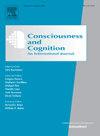Do eye movements reflect readers’ thoughts during reading? Evidence from multidimensional experience sampling and eye movements
IF 2
3区 心理学
Q2 PSYCHOLOGY, EXPERIMENTAL
引用次数: 0
Abstract
While reading narrative texts, readers’ attention often fluctuates from the text (e.g., immersion) to text-unrelated thoughts (e.g., mind-wandering). Research on mind-wandering and immersion suggests that they influence the reading process differently. In this article, we examine the types of thoughts readers have while reading a literary text. Specifically, we investigated the effect of immersion and mind-wandering on eye-movement behaviour during reading. Fifty-six participants read extracts from a novel while their eye-movements were monitored. Participants’ thoughts were probed using multidimensional experience sampling. We identified four types of thought: Immersion, Mind-wandering, Sub-Vocalization, and Social Episodic Thoughts. We then ran General Additive Mixed Models (GAMMs) to examine the relationship between these thought types and eye movements. Results show that eye movements are influenced by the types of thoughts readers experience while reading literary texts. These results have important implications for the way that mind-wandering is typically investigated, particularly in reading research.
在阅读过程中,眼球运动是否反映了读者的思想?来自多维经验采样和眼球运动的证据
在阅读叙事性文本时,读者的注意力经常从文本(如沉浸)波动到与文本无关的想法(如走神)。对走神和沉浸的研究表明,它们对阅读过程的影响是不同的。在这篇文章中,我们研究了读者在阅读文学文本时的思维类型。具体来说,我们研究了沉浸和走神对阅读过程中眼球运动行为的影响。56名参与者阅读一本小说的节选,同时监测他们的眼球运动。参与者的想法是通过多维体验抽样来探测的。我们确定了四种思维类型:沉浸式思维、走神思维、次发声思维和社会情景思维。然后,我们运行通用加性混合模型(GAMMs)来检验这些思维类型和眼球运动之间的关系。研究结果表明,在阅读文学文本时,眼球运动受到读者思维类型的影响。这些结果对研究走神的典型方式,特别是在阅读研究中具有重要意义。
本文章由计算机程序翻译,如有差异,请以英文原文为准。
求助全文
约1分钟内获得全文
求助全文
来源期刊

Consciousness and Cognition
PSYCHOLOGY, EXPERIMENTAL-
CiteScore
4.30
自引率
8.30%
发文量
123
期刊介绍:
Consciousness and Cognition: An International Journal provides a forum for a natural-science approach to the issues of consciousness, voluntary control, and self. The journal features empirical research (in the form of regular articles and short reports) and theoretical articles. Integrative theoretical and critical literature reviews, and tutorial reviews are also published. The journal aims to be both scientifically rigorous and open to novel contributions.
 求助内容:
求助内容: 应助结果提醒方式:
应助结果提醒方式:


